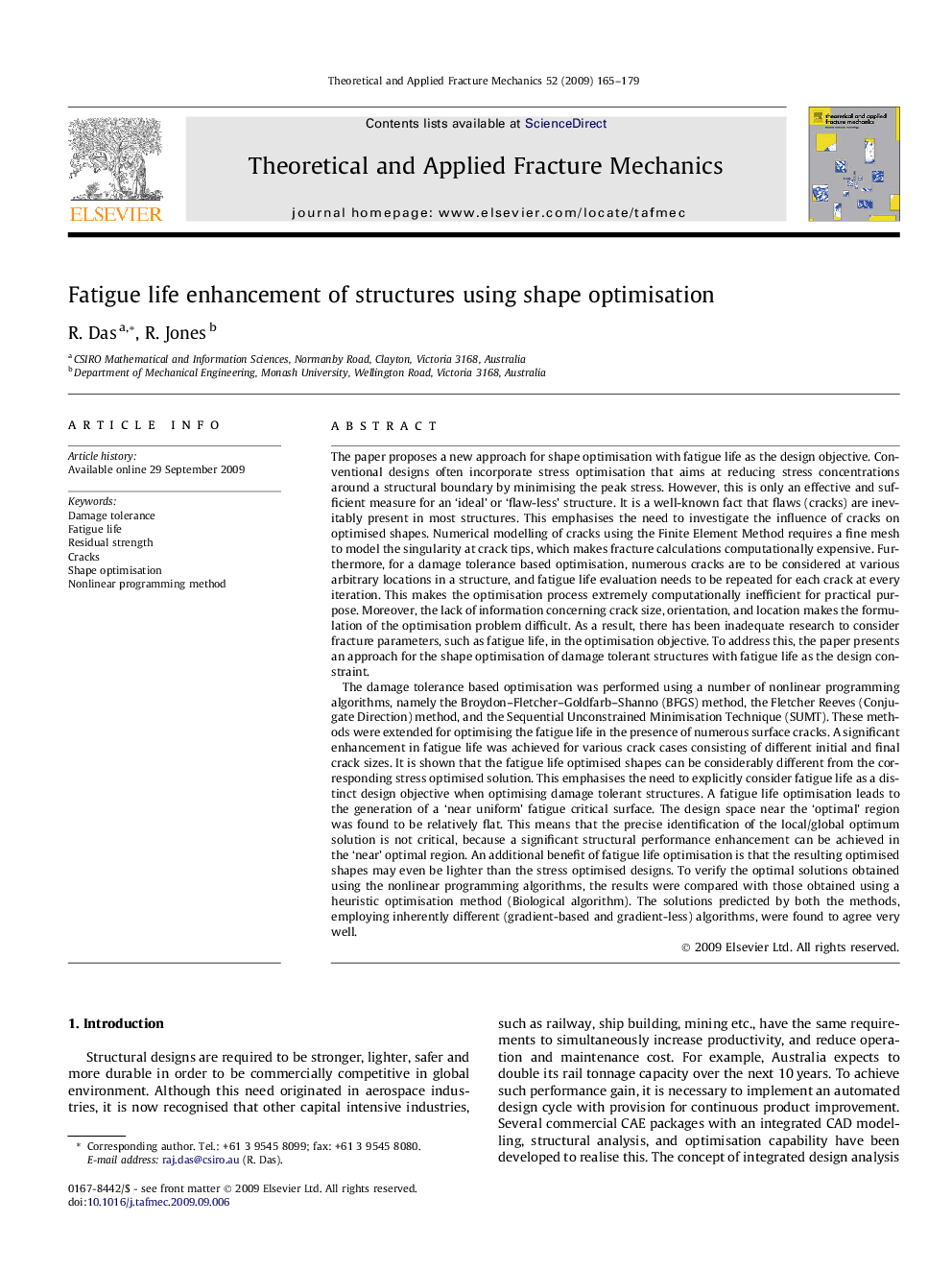| کد مقاله | کد نشریه | سال انتشار | مقاله انگلیسی | نسخه تمام متن |
|---|---|---|---|---|
| 804969 | 905030 | 2009 | 15 صفحه PDF | دانلود رایگان |

The paper proposes a new approach for shape optimisation with fatigue life as the design objective. Conventional designs often incorporate stress optimisation that aims at reducing stress concentrations around a structural boundary by minimising the peak stress. However, this is only an effective and sufficient measure for an ‘ideal’ or ‘flaw-less’ structure. It is a well-known fact that flaws (cracks) are inevitably present in most structures. This emphasises the need to investigate the influence of cracks on optimised shapes. Numerical modelling of cracks using the Finite Element Method requires a fine mesh to model the singularity at crack tips, which makes fracture calculations computationally expensive. Furthermore, for a damage tolerance based optimisation, numerous cracks are to be considered at various arbitrary locations in a structure, and fatigue life evaluation needs to be repeated for each crack at every iteration. This makes the optimisation process extremely computationally inefficient for practical purpose. Moreover, the lack of information concerning crack size, orientation, and location makes the formulation of the optimisation problem difficult. As a result, there has been inadequate research to consider fracture parameters, such as fatigue life, in the optimisation objective. To address this, the paper presents an approach for the shape optimisation of damage tolerant structures with fatigue life as the design constraint.The damage tolerance based optimisation was performed using a number of nonlinear programming algorithms, namely the Broydon–Fletcher–Goldfarb–Shanno (BFGS) method, the Fletcher Reeves (Conjugate Direction) method, and the Sequential Unconstrained Minimisation Technique (SUMT). These methods were extended for optimising the fatigue life in the presence of numerous surface cracks. A significant enhancement in fatigue life was achieved for various crack cases consisting of different initial and final crack sizes. It is shown that the fatigue life optimised shapes can be considerably different from the corresponding stress optimised solution. This emphasises the need to explicitly consider fatigue life as a distinct design objective when optimising damage tolerant structures. A fatigue life optimisation leads to the generation of a ‘near uniform’ fatigue critical surface. The design space near the ‘optimal’ region was found to be relatively flat. This means that the precise identification of the local/global optimum solution is not critical, because a significant structural performance enhancement can be achieved in the ‘near’ optimal region. An additional benefit of fatigue life optimisation is that the resulting optimised shapes may even be lighter than the stress optimised designs. To verify the optimal solutions obtained using the nonlinear programming algorithms, the results were compared with those obtained using a heuristic optimisation method (Biological algorithm). The solutions predicted by both the methods, employing inherently different (gradient-based and gradient-less) algorithms, were found to agree very well.
Journal: Theoretical and Applied Fracture Mechanics - Volume 52, Issue 3, December 2009, Pages 165–179